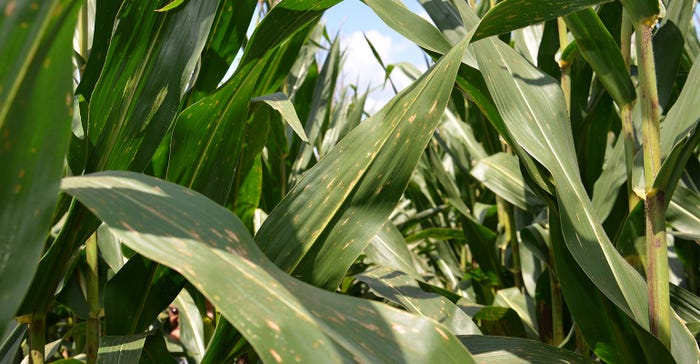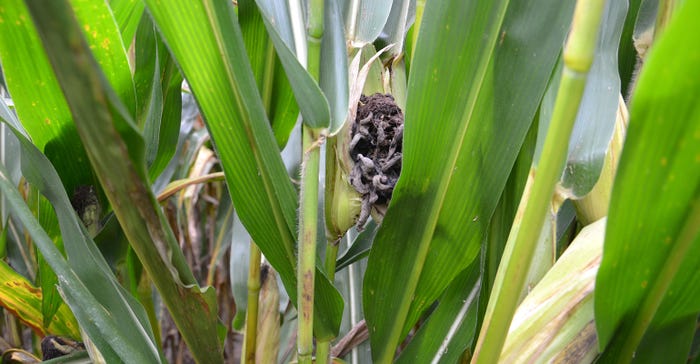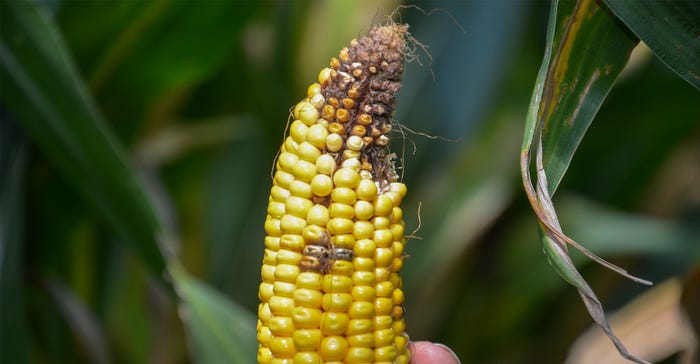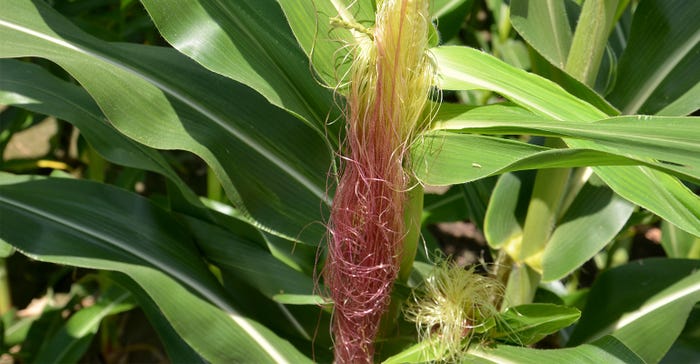It’s money time in your cornfield. You may have corn at different stages, but sooner or later pollination will end and grain fill will begin.
Do you know what’s happening in your fields? “You really ought to spend the time to find out,” says Dave Nanda, an independent crops consultant. “You can learn things now that you won’t be able to explain if you wait until harvest. What you learn may help you make better decisions for next year.”
Seed Genetics-Direct is the sponsor of Corn Watch ’17.
Take a field trip
Here are six things Nanda found walking cornfields this time of year.

1. Diseases on upper leaves. Someone should have scouted this field earlier, Nanda says. Disease lesions are already moving up the plant. If they take out the ear leaf, yield could be affected, he notes. Whether you could still spray depends on stage of ear development.
2. Ear rots. Ears hanging down on green plants this early in the season is not something you want to see, Nanda says. An ear rot is at work in the field. Once you find an ear like this, scout to see how many more plants are affected, he suggests.
3. Nutrient deficiencies. All the rain this year may have you wondering if you lost more nitrogen than usual. It could depend on soil types, when you applied N and a host of other factors, Nanda says. If you find leaves yellowing down the midrib starting at the tip, you’ve found typical signs that the plant is short of nitrogen.
4. Unusual formations. Corn smut is not a pretty sight. Caused by a fungus, Nanda says infection actually occurs earlier in the season. The condition may be worse where areas were ponded when corn was small. This may be a year in many areas where you might find more smut than usual.
5. Ear rot beneath husks. Hopefully you won’t find an ear like this one too often, Nanda says. Another ear rot is at work on the kernels in the upper third of the ear. Once you find ear rot like this, you may want to check other ears at random to see if you find any more that are infected.
6. Long silks. Often if silks continue to grow and grow, it means kernels didn’t pollinate, Nanda says. It’s possible that due to weather conditions, pollen wasn’t available when the silks were ready to receive it. The way to tell for sure is to gently shuck the ear and see if the silks remain attached. If they do, then pollination didn’t occur.










